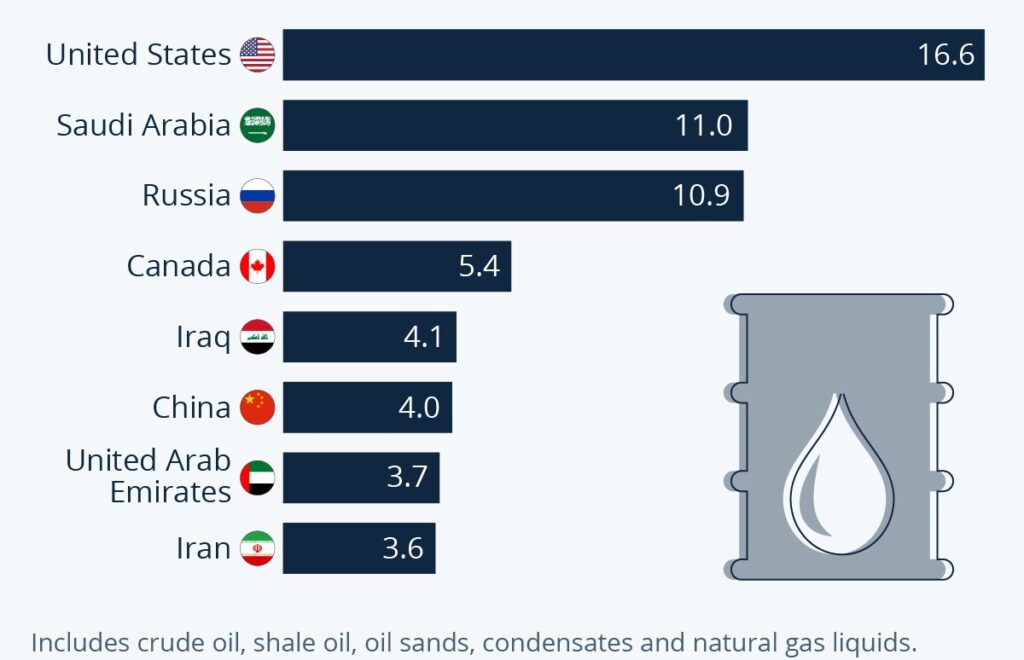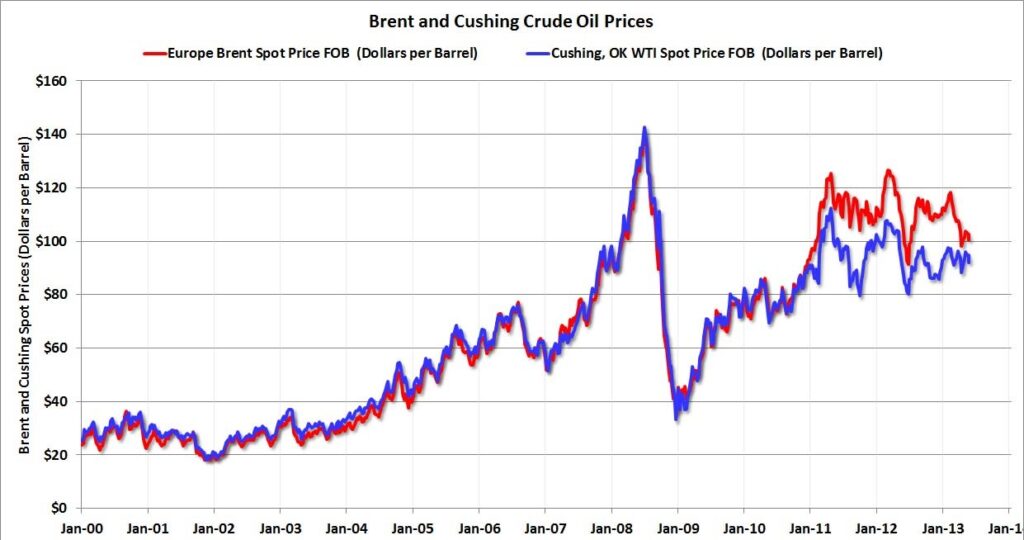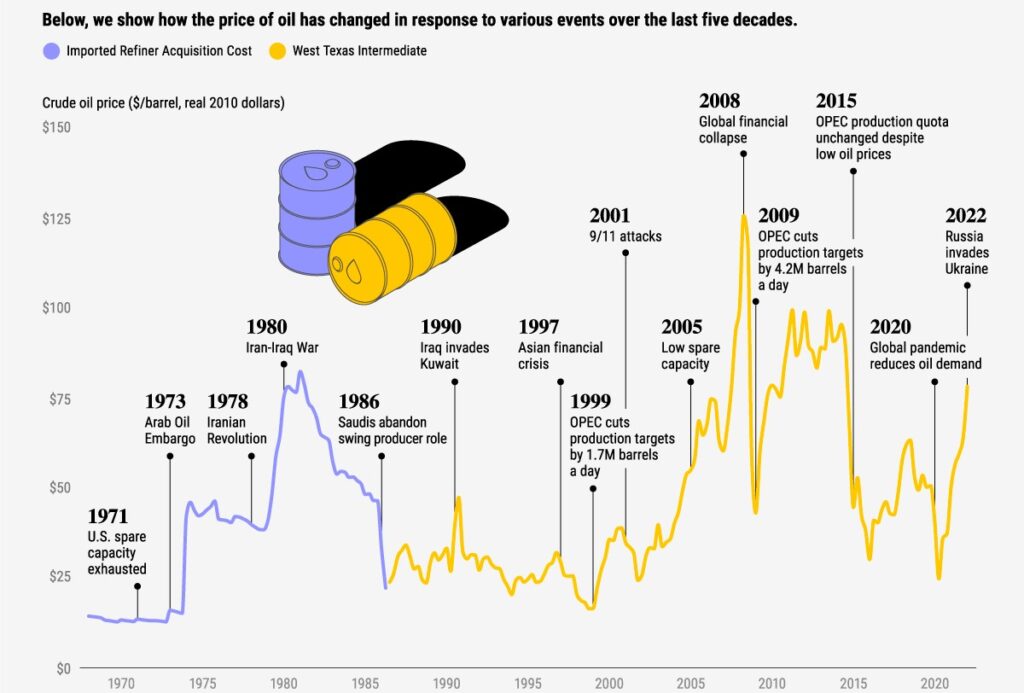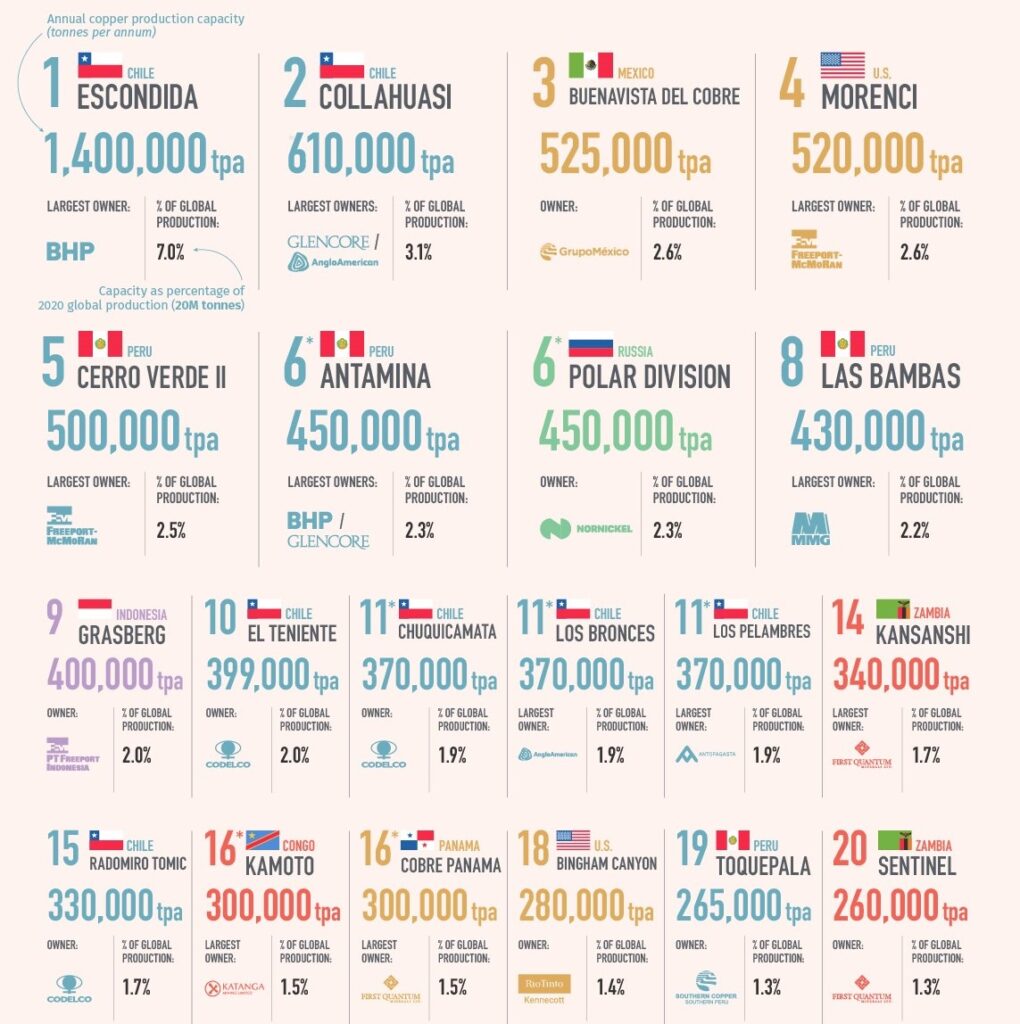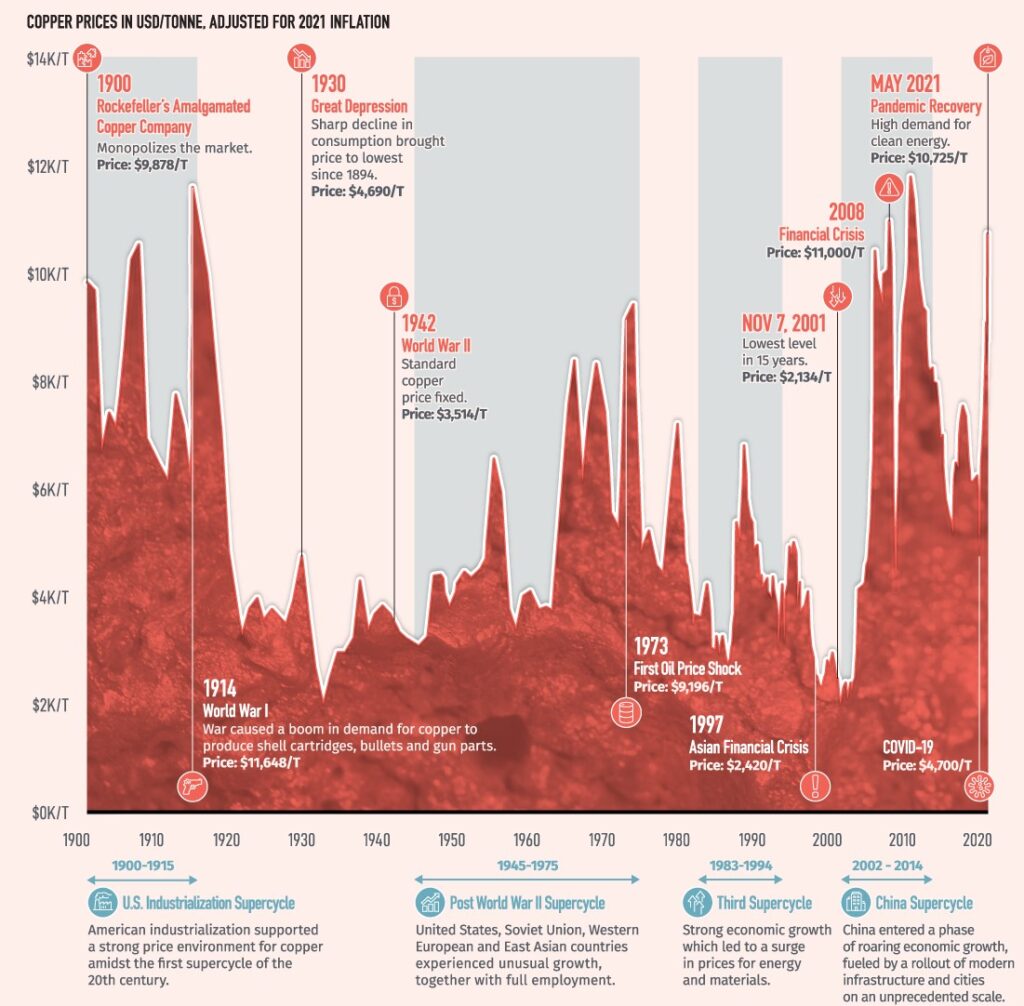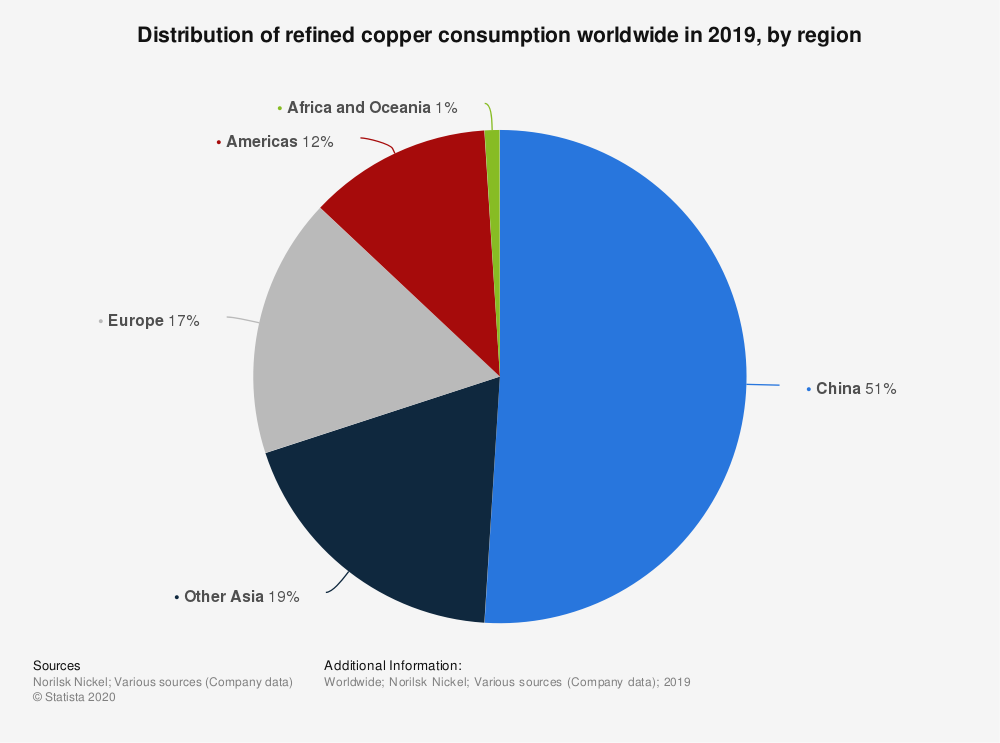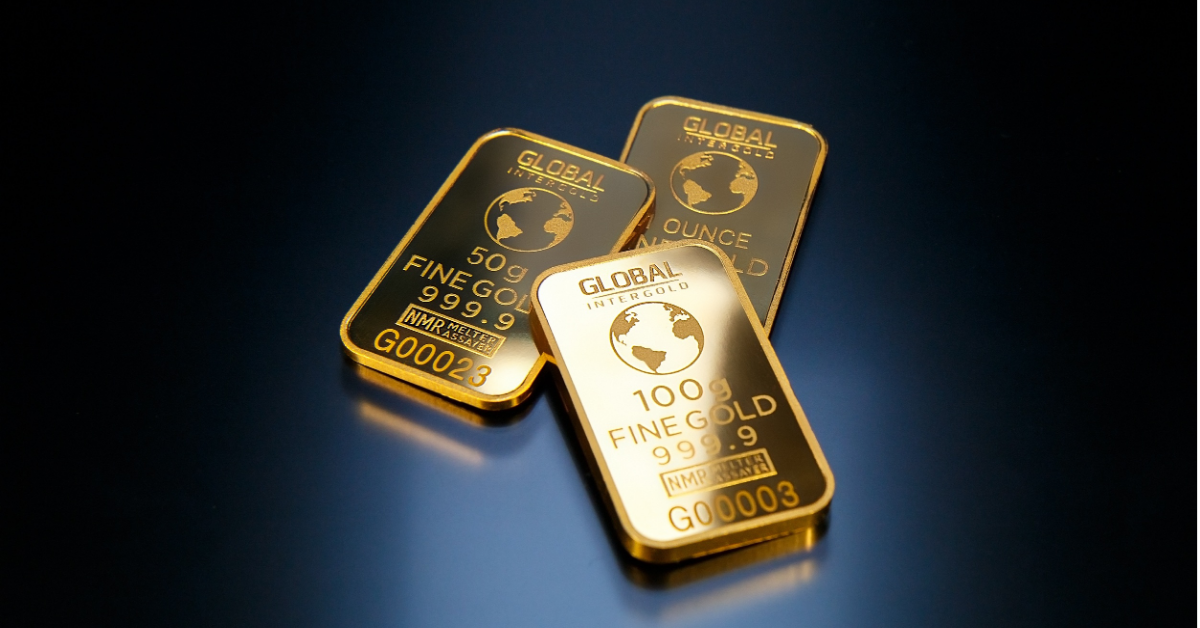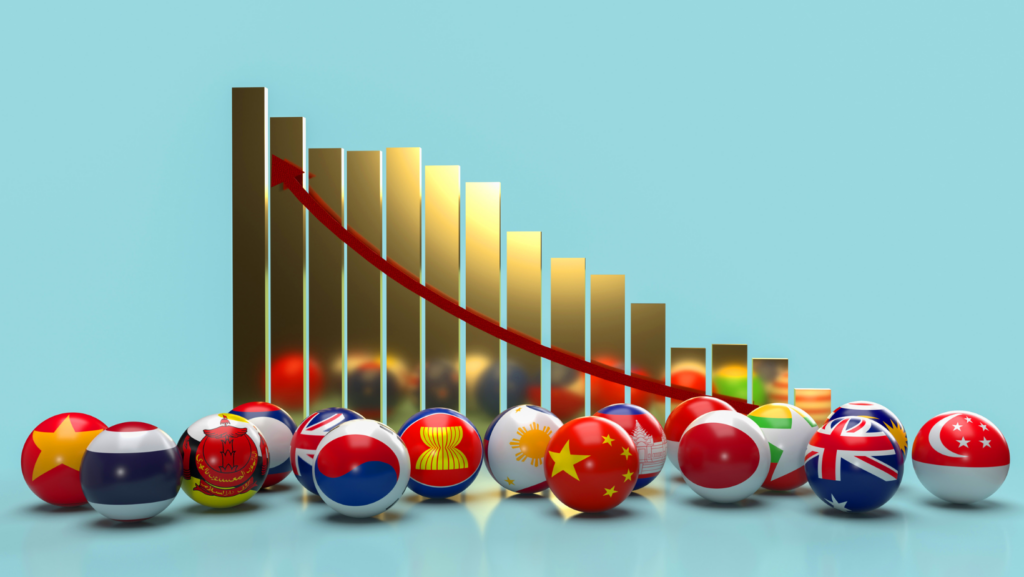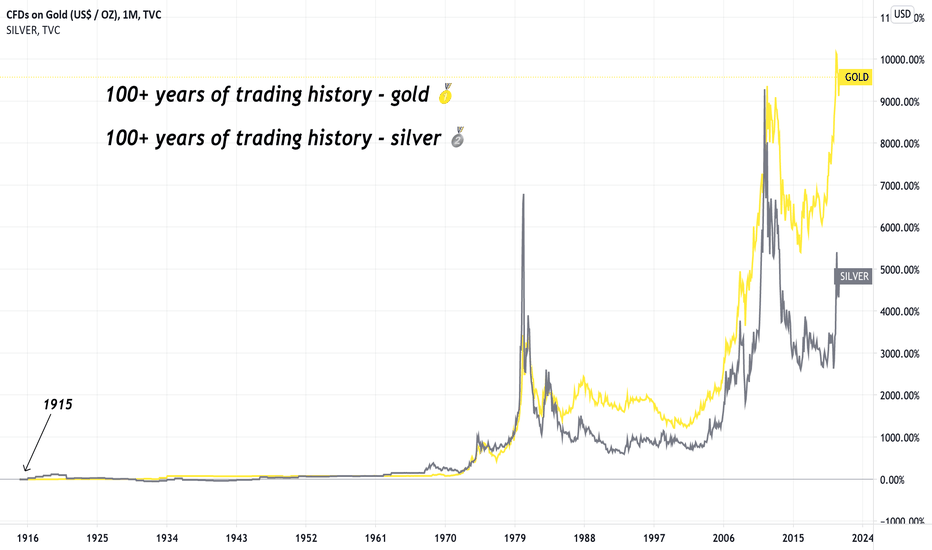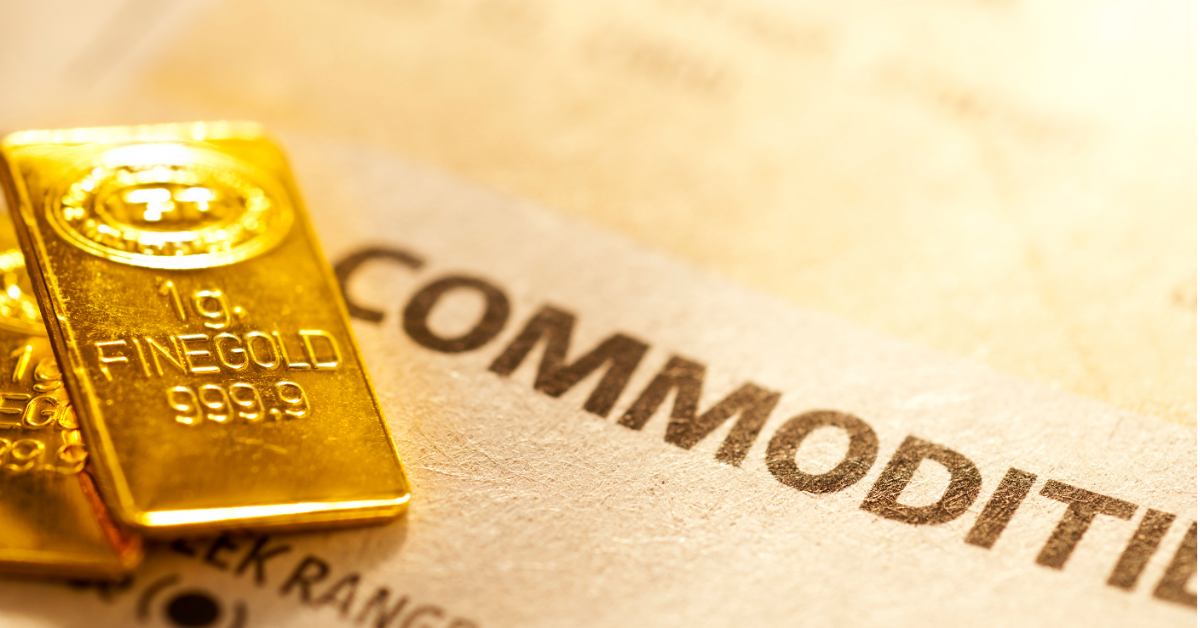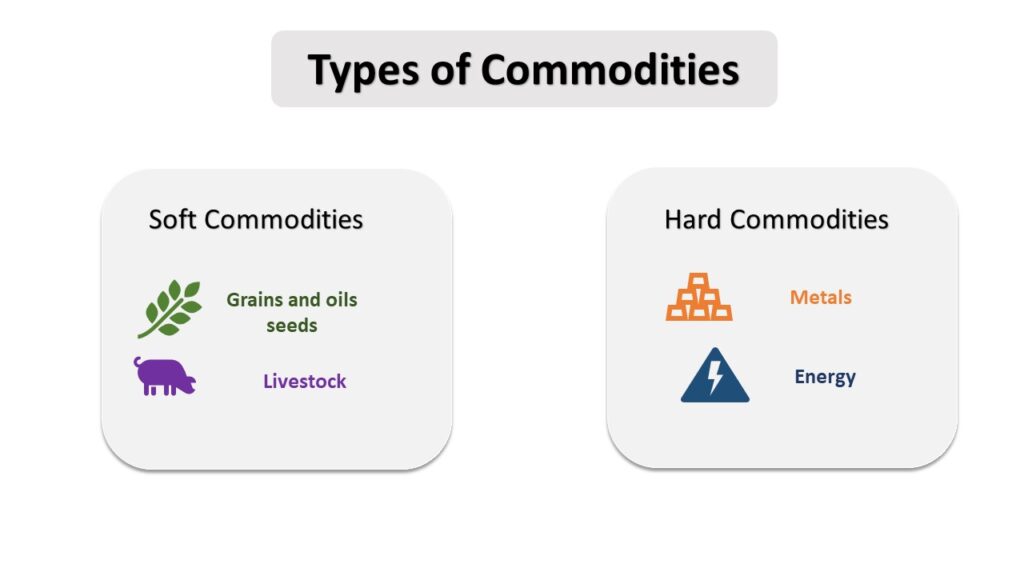Commodities are the raw materials that underpin the entire global economy. From food production to manufacturing, tech to the energy sector, commodities are the building blocks for it all. In this article, we’ll discuss what commodities are, how to trade them, and what decisions you’ll need to make if you’re interested in trading commodities yourself.
What are commodities?
Commodities are, simply put, the raw materials that are harvested, collected and processed into food, goods and the services all human beings use for activities every day.
Trading commodities is different to trading stocks or bonds because they are physical materials and goods. Commodities’ fluctuations in price make them potentially profitable markets to trade in. However, they can also carry more risk than bonds and the stock market, because of unpredictable price movements and the specialised knowledge and research required to stay informed of the market.
How to trade commodities
Before you start trading commodities, you’ll need to choose which commodity you’re interested in. They are typically divided into two categories.
- Hard commodities — These are mined or otherwise extracted natural resources, such as natural gas, coal, oil and precious metals like gold and copper.
- Soft commodities — Unlike hard commodities, which are extracted from the earth, soft commodities are grown or harvested. Examples include livestock like hogs and cattle (which may be used for both foods and goods like leather or gelatine) and agricultural crops like coffee, cocoa and wheat, palm oil and timber.
Whether you want to trade energies, learn how to trade oil or trade soft commodities, all of these markets deal with physical goods which must be grown, reared or discovered and then harvested or collected by human labour. This makes them much more vulnerable to a range of outside factors and variable supply and demand than purely financial products (such as stocks and bonds).
Commodities trading
Commodities trading is one of the oldest forms of trade and is the original basis for what modern investing has become today. The process might have started with farmers negotiating prices for their goods outside of harvest time, but these days, wanting to trade commodities involves a more sophisticated process. Trading commodities can be done in a few ways, with each offering advantages and disadvantages, which may or may not suit your portfolio and your approach to trading.
Commodities futures
One way to conduct commodities trading is through the exchange of different types of assets in the form of futures contracts. Futures contracts allow investors to buy and sell on a futures exchange, with a determined future price for the assets which is agreed to by both parties. Where futures can make traders profits is in the way the actual asset price may differ from this agreed price. The actual price of a commodity could spike or crash due to market forces and external factors — so while a huge fluctuation in price could mean a win for you, it could also expose you to more risk and losses. Commodities futures aren’t involved in the trading of the physical goods and resources themselves — they’re a bet on the movement in price changes only.
Purchasing physical commodities
Unlike futures, which speculate on the predicted price of goods in the future, some types of commodities can be physically acquired by an investor. Because these transactions can cost more than other investments, they are usually only reserved for very value-dense commodities like precious metals and not for assets like crops, livestock or energy commodities.
If you’ve been wanting to learn how to trade gold or how to trade copper, this could be the route for you.
Commodities stocks
Commodities stocks offer a way to trade commodities that are linked to a company producing the asset rather than in the value of the raw asset itself. Commodity stocks allow you to obtain indirect exposure to the commodities market, but they do come with some complex underlying principles. For instance, some commodities stocks move in step with the commodity price, while others have a variable relationship with the commodity price and their own stock price.
Here’s an example: a global shortage of a certain commodity like oil might indicate a drop in an oil company’s stock value, but in the longer term, a supply issue would cause increased demand and allow oil to rise in value, thus making the shortage advantageous to oil company stockholders.
If you want to invest in something that closely follows the fluctuation of a commodity’s price, commodities stocks aren’t the best way to do this. If you’re interested in gaining exposure to a commodities market without trading on the asset’s market price though, they’re a great way to do this.
Commodities ETFs
ETF stands for exchange traded funds, and they are a type of investment instrument that works by holding an asset type in a larger commodities basket. Leveraging commodities ETFs is a good way to diversify your portfolio from a single position. However, because commodities ETFs use a process to mimic a commodity’s price, they may not always perfectly reflect the reality of the market.
Ultimately, you need to weigh up the pros and cons of each of these commodity trade options, as well as stay on top of the expert analysis and trade indicators in order to start trading commodities in a way that’s profitable and sustainable in the long term.
Factors that might affect commodity trade
We’ve mentioned expert knowledge, research and analysis a few times here, and it’s worth reiterating that commodities trading really does require keeping a close eye on breaking news and events that will affect the market. But more than just keeping an eye on a particular stock market or a narrow range of investor-relevant updates, commodities trading can be affected by many different global socioeconomic, environmental and political factors. Here are some of them:
- Geopolitics — With so many commodities being sourced and traded globally, the international political situation can have a huge effect on the health of commodities trading in many areas. The most recent war in Ukraine has been a timely reminder of this, with the conflict affecting grain prices, among others. Another example of geopolitics at play: in the past several decades, the political situation in the Middle East has been closely tied to the performance of oil as a commodity.
- Domestic politics — Domestic politics in an asset’s country of origin can also affect the global commodities market. If the majority of a precious metal like copper is mined in a certain country and the labour laws governing those mines suddenly change overnight, this will have a significant impact on the commodity’s price going forward.
- Weather — Rainfall, drought, unexpected cold snaps and heat waves — weather events have the capacity to change a commodity’s value overnight. From natural disasters to unpredictable wet and dry seasons, weather events have the capacity to impede a commodity’s production at all stages of the supply chain, which means weather needs to be monitored closely.
- Market competition — Technological changes to the way we produce energy, manufacture large-scale infrastructure or even the technology we use day to day can all evolve, causing a once booming commodity industry to suffer a loss to the new competition (e.g. oil making way for natural gas and renewables). New companies arriving to market can also upset the landscape of commodities trading.
- Seasonality — With agricultural and livestock soft commodities, there’s a level of predictability around harvest and slaughter times, which will cause an oversupply in the market and generally lead to lower prices. In the period leading up to harvest, good weather forecasts can boost a commodity’s price.
- Macroeconomics — The health of the economy at large is also going to affect commodities prices. Fluctuations to GDP, inflation, interest rates, the construction and transport industries, wages, trade embargoes and sanctions can all upset a predictable commodities market and create unexpected results.
- Other environmental factors — Commodities are affected by material conditions in our world in a way stocks and bonds just aren’t. Events like the 2021 Suez Canal obstruction, in which the Ever Given blocked the crucial shipping route for six days, is one such example of this. Disruptions to the supply chain can occur for all sorts of reasons and expose commodities traders to risks they couldn’t have predicted.
Building a strong portfolio with trade commodities
Because commodities trading is by its very nature higher risk and reward than other kinds of trade, it offers some unique opportunities. However, it can also expose vulnerabilities in your portfolio and requires a trader to be able to weather some short-term losses in order to benefit from longer-term gains.
For this reason, many investors choose to dedicate a portion of their overall portfolio to trading in commodities markets. For example, 20% of your total portfolio could be dedicated to commodities trading, protecting you from over-exposure but opening you up to big potential wins down the line.
Ready to create your commodity trading account?
If you’ve been following a commodities market, buffing up on your knowledge of political and environmental factors that might affect it and reading expert insights from financial journalists, you may be eager to open a commodity trading account. At VT Markets, we offer beginner-friendly and globally recognised trading platforms in a user-friendly interface, so you can trade commodities using a transparent and trusted forex trading environment that’s totally secure.
Want to know more about how we’ve designed our systems to meet the needs of clients? Get in touch and we’ll help you with anything you need, from choosing your account type to managing your investment size and leveraging the right commodities trading options to suit you.
FAQs
How do I start trading commodities?
Once you’ve done your research and decided which commodities you want to trade, VT Markets can help you find the right trading opportunity, monitor your commodities and close in a strong position with the help of powerful official trading platforms MetaTrader 4 and MetaTrader 5.
If you want to start practising the way you trade commodities before launching into global markets, our demo account is a great jump-off point. This zero-cost method is a good beginner option as you become familiar with different trading options, from oil CFDs to soft commodity and energy trading.
What are the most traded commodities in the world?
When it comes to the most traded commodities in the world, the winners, unsurprisingly, tend to be goods that are consumed at a high rate on a daily basis by much of the world’s population.
Hard commodities that are used for energy consistently top the list, with Brent Crude Oil, West Texas Crude Oil and natural gas often leading the list. They’re followed by highly traded metals like steel and copper and consumer goods like coffee and cocoa.







